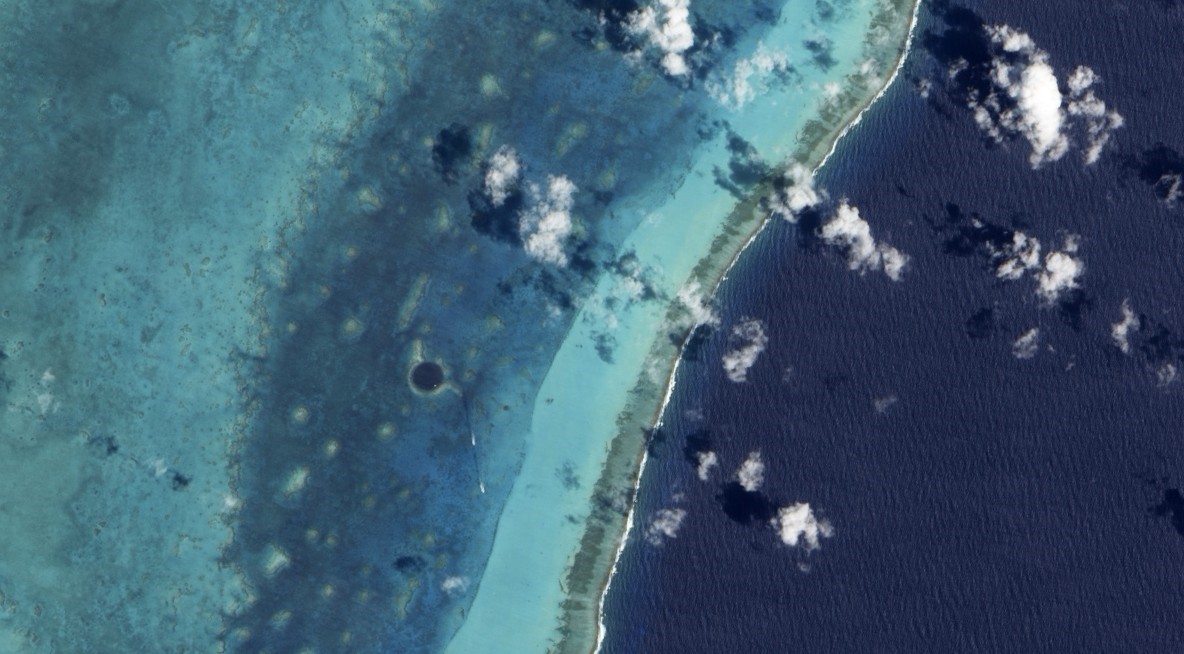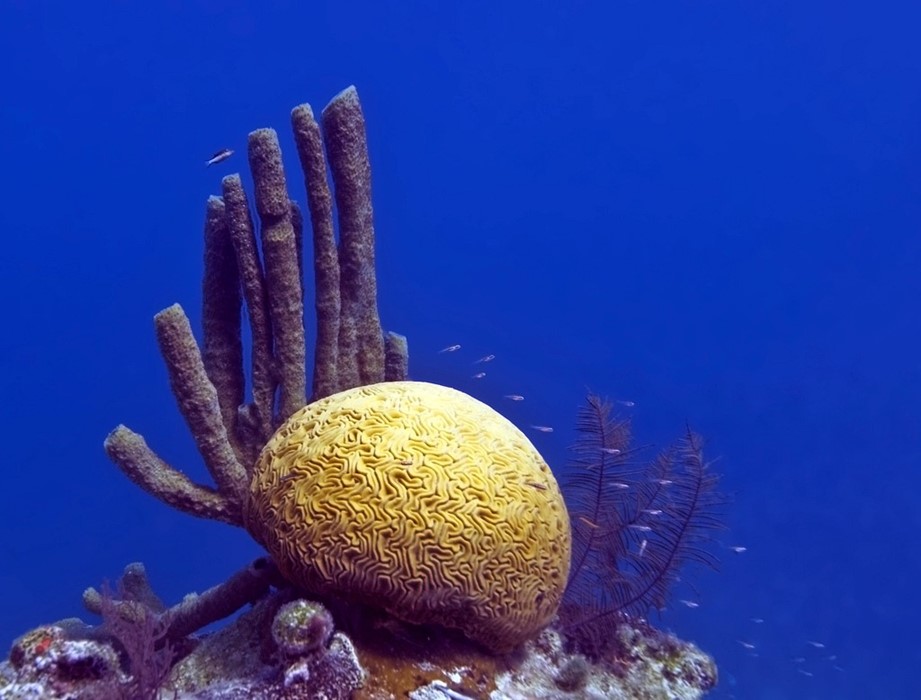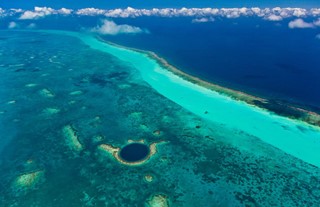We skirt around the edges of Belize's Great Blue Hole, a 400 foot abyss in the heart of the ocean
Where on Earth?
Belize
GPS Coordinates: 17°18′N 87°32′W
From the air, Belize’s Great Blue Hole appears as a perfectly circular void amid the speckled corals and shallow crystal waters of Lighthouse Reef. A mysterious blank in the seascape nearly a thousand feet across, it dwarfs the dive boats that meander in and out from the open sea. Gazing down, it’s impossible to see the bottom, over 400 feet below the waves. Instead, there is only deep, dark, perfect blue – like a hole in the very surface of the Earth.
Located some forty nautical miles offshore, this stunning geological formation lies beyond Belize’s vast barrier reef system; the world’s second-longest after Australia. A Caribbean atoll stretching 28 miles from north to south, Lighthouse is home to six islands dotted with palm trees, white sand beaches, iguanas and seabirds. Near its centre lies the Great Blue Hole. Even in satellite photos, the dark circle stands out from the shallows, an unreal geometric oddity in an otherwise turquoise dream. In its dark depths, divers have discovered corals, sharks and unmistakable clues to its ancient origins.

What on Earth?
Before the early 70s, the sinkhole was as yet unnamed and largely unknown. Descending into the abyss, explorers such as Jacques Cousteau found a series of ledges, a small cave and giant stalactites that can only form above water. Carbon-dated to as early as 150,000 years ago, they reveal that the Great Blue Hole first formed as a karst limestone cave on land – similar in form to the cenotes that dot the nearby Yucatán Peninsula. With vast glaciers locking up much of the world’s water, the area was above sea level and forests covered the land. Over time, the sinkhole formed in four distant stages, creating the ledges, before rising seas swept in about 12,000 years ago to create the current submarine wonder.
Declared a UNESCO World Heritage Site in 1996 and now protected by the Belize Audubon Society as the Blue Hole Natural Monument, the sinkhole is relatively sparse in marine life, especially compared to the surrounding shallow reefs – which teem with coral, fish and sea turtles. Sharks and other itinerant visitors are sometimes spotted, but its value to science lies below. At the lifeless bottom, with no waves or currents to disturb the depths, the sinkhole acts as a sediment trap, capturing dust particles falling from the surface in neat layers that allow scientists to read the ancient history of the planet.

How on Earth?
Regular trips depart from the Belize coast and take a few hours to reach Lighthouse Reef, which has a few overnight options. Snorkelling and kayaking are possible, but if you’re an experienced diver (and things like hydrogen sulphide thermoclines get you excited) you’ll want to book a specialist scuba trip. To take in the Great Blue Hole from above, you can charter a small plane with the awesomely-80s Tropic Air (check out that logo!) or a helicopter with Astrum. While expensive, this gives you the option of hovering above the sea for perfect pictures.

